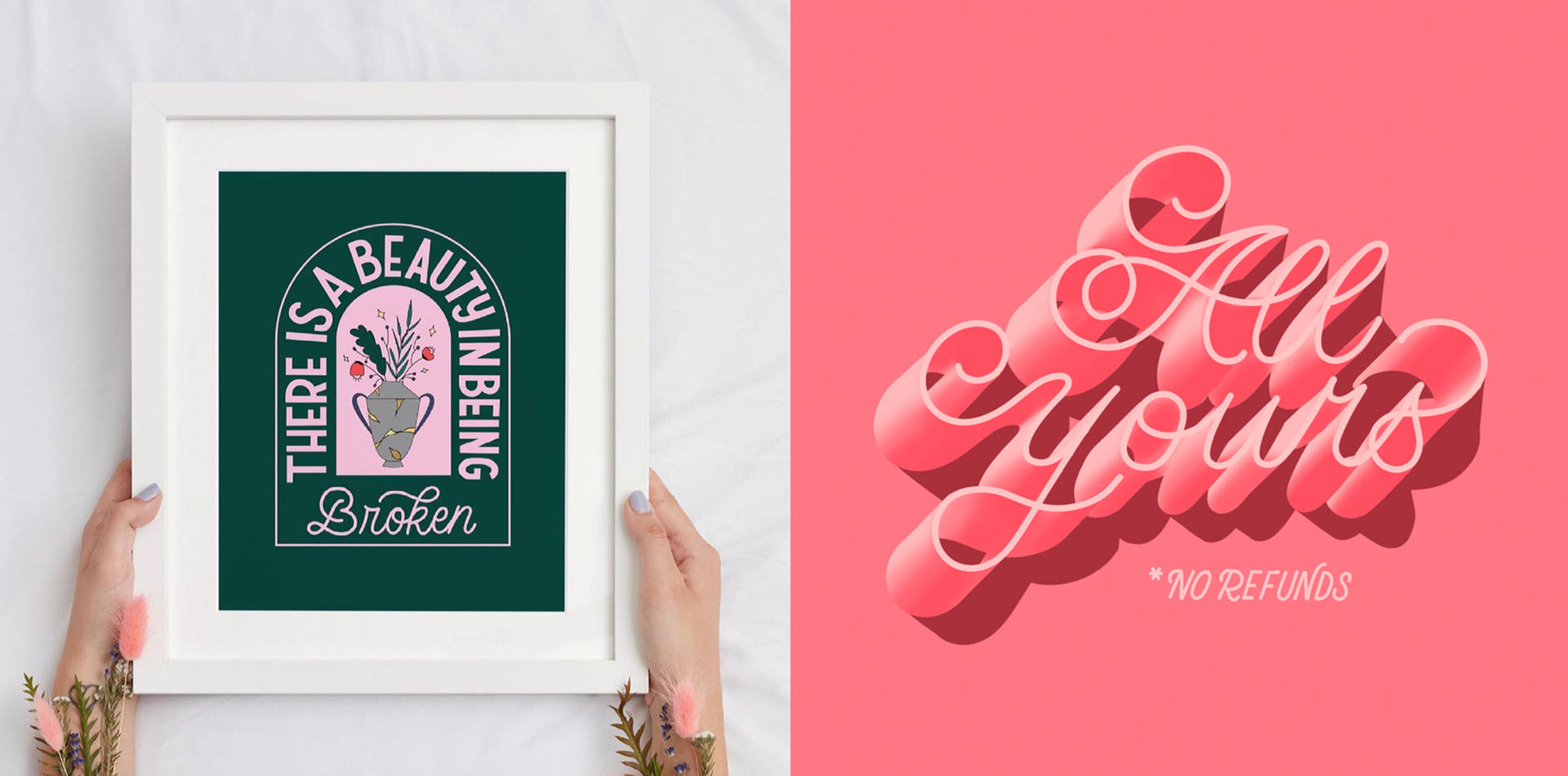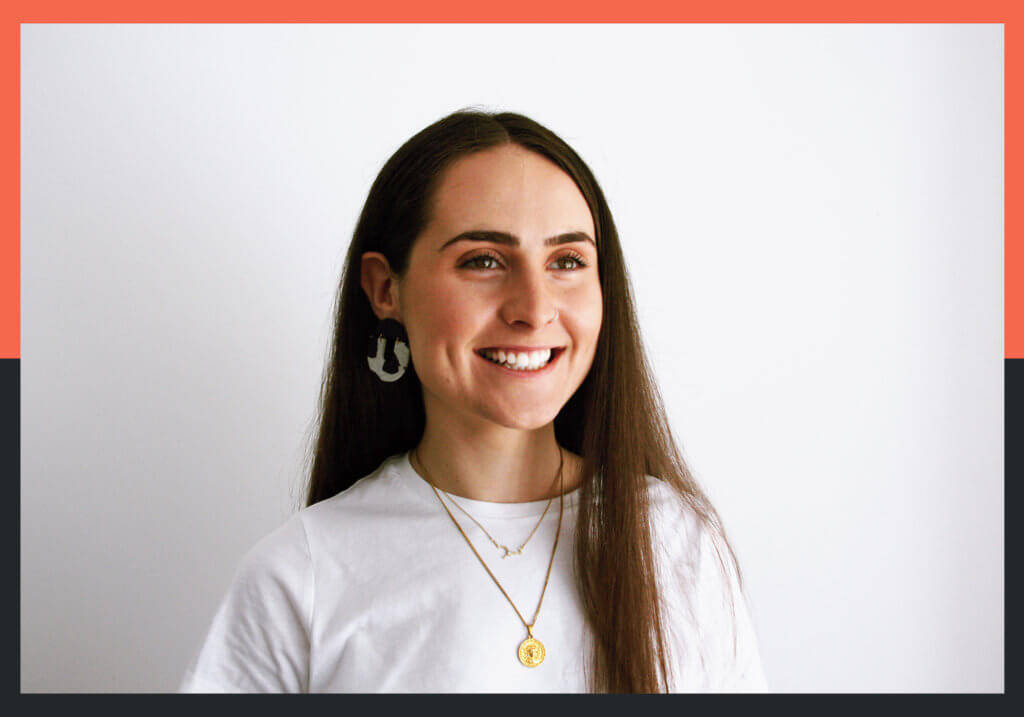London College of Communication 2020 graduate, Zoe Bonham has always had a flair for being creative, but her decision to go into design was quite spontaneous. Initially planning to go into teaching or therapy, she came across Graphic Design at college and fell in love with the discipline, before going on to study Graphic Branding and Identity at the LCC.
Gaining a strategic understanding of client audience and developing insights through in-depth research before starting the design process, are fundamental to Zoe’s practice. Her degree course enabled her to understand the importance of seeing the bigger picture of a project, as well as helping her to present and critique her own work effectively. As she aptly puts it: “I don’t just see myself as a graphic designer, that title is far too simplistic. It’s not just about making beautiful posters, leaflets and logos. I’ve learned that design is so much more than appearance – it’s about communication, a feeling, an experience, a story.”
Whilst studying, Zoe discovered a real love of lettering and typography. What started as a creative outlet and side project has really taken off, winning her work and enabling her to set up a small print business. Currently working as a Lettering Artist and Brand Designer, Zoe creates beautifully crafted calligraphy and hand lettering which often feeds into branding projects, where she creates unique and authentic brand outcomes: “Learning and practising lettering has really shaped me to be a better designer and can go hand in hand with building unique, authentic brands.”
Zoe’s design work is forward thinking, with a confidence to challenge the norm, consider environmental impact and see projects from different perspectives. Whilst graduating during a pandemic hasn’t been easy, she’s adapted to the current situation by developing new skills, embarking on freelance projects and setting up her Etsy business: ZoeBonhamDesignCo. We can’t wait to see where the future takes her next!

We caught up with Zoe to find out more about her journey into the design industry so far, tips for students and new designers, and thoughts on where the design industry is heading.
Why did you decide to become a designer and how has that evolved over time?
Deciding to take the design route was a fairly surprising and spontaneous idea of mine in year 12 when we were thinking about universities and degrees. Don’t get me wrong, it wasn’t totally wild and random – I’ve always been a ‘creative type’ whether that’s music, art or dance but originally, I was planning on channelling those talents through teaching or therapy in one of those areas. I had fallen into society’s trap of thinking that creativity was only useful in ‘proper’ jobs.
It was only in sixth form when I was experimenting more in my Art A Level that I came across Graphic Design and the power it has to make an impact on the world. At this point I was taking a Fine Art route and I had no experience in design, but I started to fall in love with typography, layout and grid systems and all those sexy design principles. I began to craft a portfolio together of random self-initiated projects ready for university interviews. I really had no clue what I was doing but the idea of calling myself a graphic designer was such a fun prospect and I didn’t look back.
Now, I don’t just see myself as a graphic designer, that title is far too simplistic. It’s not just about making beautiful posters, leaflets and logos. I’ve learned that design is so much more than appearance – it’s about communication, a feeling, an experience, a story.
Where did you study and what do you know now that you wish you’d known when you started your design course?
I studied at London College of Communication on their Graphic Branding and Identity course. I always say this, but the biggest takeaway from my course was learning and understanding how to see and take on the bigger picture with any project. It’s being able to understand the purpose of your design, who it is you’re talking to and what you’re trying to say. Then, thinking about the strategy of how you are going to reach this audience, the impact it has on them and how it allows them to connect to the brand. This insight only comes after really in-depth research and is a fundamental step before you begin any kind of design work.
How have you grown over time and developed throughout your education and career so far?
Most importantly, I’ve learnt how to critique my own work and hyper-question each and every design decision until it makes perfect sense. Presenting work has become much easier and I’ve gained a lot of confidence talking about my process over the three years at university, although I definitely still need to develop further when it comes to giving presentations. I’ve also learnt how to take on sensitive matters in an empathetic way, which I believe is a really important skill to have when it comes to designing for impact or change.
However, most significantly for me was finding my love for lettering. What started off as a little creative outlet when I was bored or needed to step away from the computer, has turned into something that I am winning work for and building a tiny business from! Learning and practising lettering has really shaped me to become a better designer and goes hand-in-hand with building unique, authentic brands.
“Learning and practising lettering has really shaped me to become a better designer and goes hand-in-hand with building unique, authentic brands.”
What top tips would you give to current design students or women considering a career in the design industry?
Don’t be afraid to have your voice heard and be provocative with the narrative of your projects—the world needs to be challenged and these make interesting projects to talk about!
Be open to trying new things, new ways of thinking, techniques and skills. You never know what you might accidentally land on that will lift off a project. Plus, you might fall into a speciality you love.
Remember that design is not a one-fits-all method. Something that worked really well for one thing will never truly work the same for another. And it shouldn’t either, because design should be crafted in a totally unique and personal way for its purpose and audience.
Don’t look at Pinterest for direct inspiration. Seriously, don’t do it! It’s so tempting, and I fell into this trap a lot—but you never end up designing anything ground-breaking by looking at things that have already been done. You just put yourself behind of the game and risk creating ‘blanding’.
Recently, there has been lots of discussion in the design industry around the gender pay gap and how few women progress into senior roles. As a young/new creative do you have any thoughts on how we can counteract this imbalance?
From visiting different agencies and studios whilst at university, I’ve definitely seen first-hand how male orientated they tend to be. But comparatively, I’ve visited really great studios who really support their women to the top—Brand Opus is just one that comes to mind! I think these discussions are already going a really long way to naturally make change and I also think women are feeling more empowered to go for senior positions, ask for pay rises and be entrepreneurs.
However, in my opinion I think the industry should be focusing more on the wider diversity problem. The design industry has a much bigger issue to do with racial imbalance – every office I’ve stepped in to has been undeniably white. We need to do more to address this so that the voices working behind the scenes to create brands and to advertise are more representative of our world.
Has the Covid-19 pandemic impacted your career and how have you managed this?
Oh, absolutely. Graduating during this time has been super weird, but also tough. Not only are grads fighting over limited jobs amongst each other, but with others who have recently lost their jobs due to Covid-19. It’s a tough time for everybody, of course. I’m super fortunate that I have kept hold of a small part-time retail job that I have been able to fall back on whilst looking for opportunities. I’m also fortunate that it’s allowed me a sort of weird limbo time to explore freelance work and set up a print shop which has been the one thing to actually kickstart my career. I’m loving it too!
Where do you get your inspiration from and how do you approach a new project?
There’s never any one place I go for inspiration and every new project starts totally differently! However, every project demands a thorough discovery and research phase to really understand its purpose. Throughout my time at university, I always took a lot of time to explore the audience, as well as using resources like WGSN and LS:N Global to find trend forecasts and insights to understand how the brand will fit in and tell its story in its space. I never start designing visual identities or other collateral until I am certain on the brand’s purpose and mission, its tone of voice, what message I’m trying to convey and to whom. Sometimes, if I get stuck, I will play a little game where I piece together random words and try to create new ideas from these. It can create some totally wild, unpredictable, hilarious and a lot of the time useless outcomes, but it really helps to get the juices flowing and open your eyes to more ‘blue sky thinking’!
“Sometimes, if I get stuck, I will play a little game where I piece together random words and try to create new ideas from these. It can create some totally wild, unpredictable, hilarious and a lot of the time useless outcomes, but it really helps to get the juices flowing and open your eyes to more ‘blue sky thinking’!”
Where do you think the design industry is heading in the next five years and how will you adapt?
I think the already accelerating demand for digital is going to be supercharged considering the way our lifestyles have dramatically changed because of Covid-19 and the way we have adapted to digital living. However, I think (and hope) there is some room for more ‘old-fashioned’ or traditional ideas to swing back around – especially when it comes to sustainability. For example, my self-initiated project ‘The Soap Dispensary’, a personalised subscription service for sustainable bathroom toiletries, explored how to be accessible in a digital realm but environmentally friendly on its journey to the consumer via electric milk floats. I think these old ways of living can be entwined into modern life to make new and innovative ideas that fit in well with our needs and lifestyles now.
Who are your top five female design crushes currently working in the industry?
Jessica Hische, Rachel Joy, Jessica Walsh, Stefanie Sword-Williams and Eva Cremers to name just a few!







